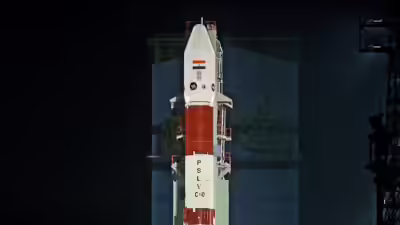India’s 1st Privately Manufactured PSLV

India’s 1st Privately Manufactured PSLV
Builder: HAL–L&T consortium (under ISRO guidance)
Launch: Scheduled for Q3 2025
Contract: First PSLV built under private sector contract (5 rockets planned)
Payload – TDS-1 (Technology Demonstration Satellite)
- Will test ~35 new indigenous technologies (final list to be confirmed).
- Key experiments:
- Electric propulsion: 300 milli-Newton thruster (developed at ISRO’s LPSC).
- Chemical propulsion systems.
- Indigenous atomic clock.
- Quantum payloads.
- Other advanced space technologies.
Significance
- Privatisation milestone – first time PSLV is manufactured outside ISRO, by Indian industry.
- Atmanirbhar Bharat in space: boosts indigenisation of critical technologies.
- Strategic impact: paves way for industry-led production of rockets → more launches, reduced costs.
- Future readiness: electric propulsion & quantum tech support long-duration & deep-space missions.
ISRO’s Next Generation Launch Vehicle (NGLV)
Objective: Replace PSLV/GSLV; enable heavy-lift and future human/lunar missions.
Capacity: ~1000 tonnes lift-off mass; 93 m tall.
Configuration:- Three propulsive stages + two strap-on boosters
- Core stage: 9 × LOX-Methane engines (110 tonnes thrust each, 475 tonnes propellant)
- Second stage: 2 × LOX-Methane engines, 128 tonnes propellant
- Upper stage: Cryogenic C-32 LOX-Hydrogen engine with 32 tonnes propellant
- Status:
- Configuration study complete.
- Design finalised for 11 LOX-Methane engines (9 core + 2 second stage).
- Fabrication clearances in progress; test facilities being set up.
Strategic Importance
- Privatisation: Boosts private sector role in manufacturing launch vehicles.
- Self-reliance: Strengthens Atmanirbhar Bharat in critical space technologies.
- Tech leap: Testing electric propulsion, quantum tech, atomic clock = future readiness for deep space, navigation, and secure comms.
- NGLV impact: Enhances India’s capacity for human spaceflight, lunar missions, and space station (BAS).
Updated - Updated: Feb 18, 2025, 2:30 PM | TOI